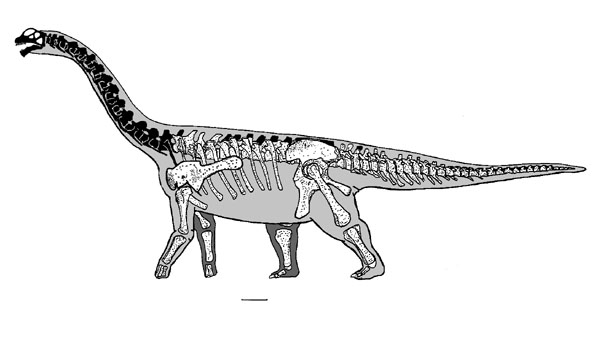
Species: skarzynskii BORSUK-BIALYNIKCA, 1977
Etymology: In honor of Mr. Wojciech Skarzynski who prepared the specimen.
Holotype: ZPAL MgD-I.48
Locality: Altan Ula IV, Nemegt Basin, Ömnögov (South Gobi), Mongolia.
Horizon: Nemegt Formation.
Biostratigraphy:
Age: Lower Maastrichtian Stage, Uppermost Senonian, Uppermost Gulf Epoch, Late Cretaceous.
Material: A postcranial skeleton lacking cervicals. It belonged to an old individual. The dorsals are strongly crushed but fairly complete. Eight of them represent the articulated series connected with 6 sacrals, and 34 caudals. The three anterior dorsals were found disarticulated and are the worst preserved. The sacrum is strongly damaged in its right half by weathering, but much better preserved on the left side. The sacral spine posteriorly to the first primary sacral and the whole arch of the last caudo-sacral are strongly damaged too. The caudals together with their chevrons are almost perfectly preserved. Only three metacarpals (I, II and III) are preserved on the right side. Otherwise both the anterior limbs together with their pectoral girdles and the sternal plates are complete, although some of the bones are slightly deformed. The pelvis lacks the distal end of the left pubis and part of the proximal portion of the right one. The anterior part of the left ilium, the posterior part of the right one and the dorsal border of the both ilia are strongly damaged (obviously due to the activity of the predators). The left tibia and fibula are distorted and only three metatarsals (I, II and IV) and some phalanges are preserved in that pes. The left astragalus seems to be coalesced with the tibia, which is not the case on the right side.

Referred material:
ZPAL MgD-I/25c: A scapula and coracoid of a young individual. The coraco-scapular suture is unfused. The distal end of the scapula as well as a proximal part of its posterior border are damaged.